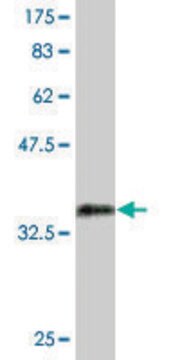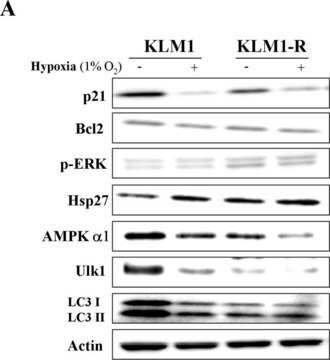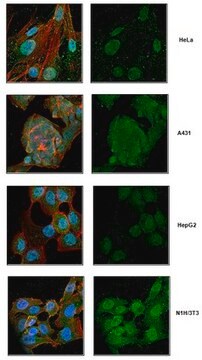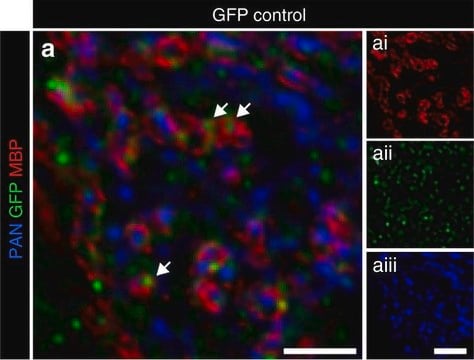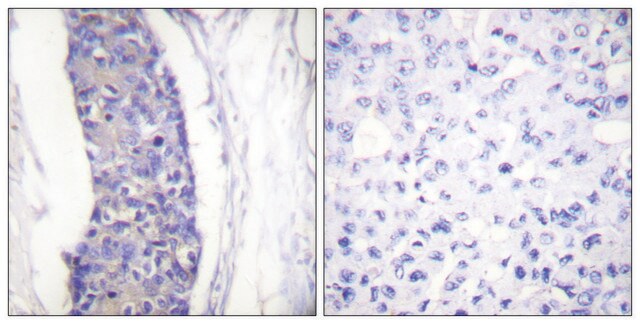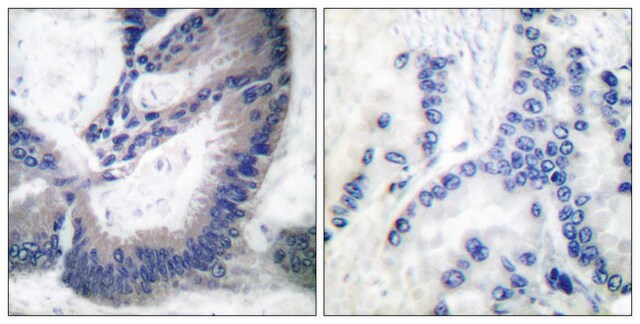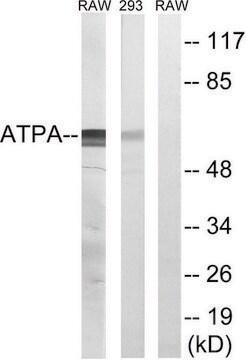AB5382
Anti-Nitric Oxide Synthase II Antibody
serum, Chemicon®
Sinónimos:
NOS II, iNOS
About This Item
Productos recomendados
origen biológico
rabbit
Nivel de calidad
forma del anticuerpo
serum
tipo de anticuerpo
primary antibodies
clon
polyclonal
reactividad de especies
mouse, rat
fabricante / nombre comercial
Chemicon®
técnicas
immunocytochemistry: suitable
immunohistochemistry: suitable
western blot: suitable
Nº de acceso NCBI
Nº de acceso UniProt
Condiciones de envío
dry ice
modificación del objetivo postraduccional
unmodified
Información sobre el gen
mouse ... Nos2(18126)
rat ... Nos2(24599)
Descripción general
Especificidad
Inmunógeno
Aplicación
1:5000 (ABC) dilution of a previous lot was used on tissue sections (rat liver).
Immunocytochemistry:
1:50,000 dilution of a previous lot was used on cultured cells.
Western blot:
1:5,000 (ECL). The antibody has been used successfully on rat liver. It is not recommended for use on rat brain extracts since unidentified bands may be present.
Optimal working dilutions must be determined by end user.
Neuroscience
Oxidative Stress
Calidad
Western Blot Analysis:
1:1000 dilution of this antibody detected INOS on 10 µg of Mouse liver lysates.
Descripción de destino
Forma física
Almacenamiento y estabilidad
Handling Recommendations: Upon first thaw, and prior to removing the cap, centrifuge the vial and gently mix the solution. Aliquot into microcentrifuge tubes and store at -20°C. Avoid repeated freeze/thaw cycles, which may damage IgG and affect product performance.
Nota de análisis
Macrophages, liver lysates
Otras notas
Información legal
Cláusula de descargo de responsabilidad
¿No encuentra el producto adecuado?
Pruebe nuestro Herramienta de selección de productos.
Código de clase de almacenamiento
10 - Combustible liquids
Clase de riesgo para el agua (WGK)
WGK 1
Certificados de análisis (COA)
Busque Certificados de análisis (COA) introduciendo el número de lote del producto. Los números de lote se encuentran en la etiqueta del producto después de las palabras «Lot» o «Batch»
¿Ya tiene este producto?
Encuentre la documentación para los productos que ha comprado recientemente en la Biblioteca de documentos.
Artículos
The term neurodegeneration characterizes a chronic loss of neuronal structure and function leading to progressive mental impairments.
Nuestro equipo de científicos tiene experiencia en todas las áreas de investigación: Ciencias de la vida, Ciencia de los materiales, Síntesis química, Cromatografía, Analítica y muchas otras.
Póngase en contacto con el Servicio técnico
